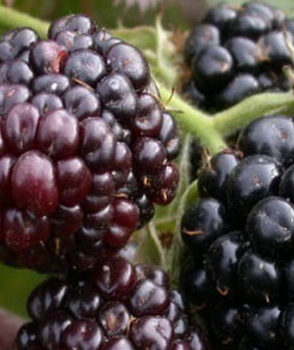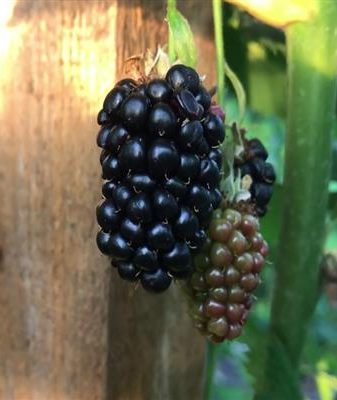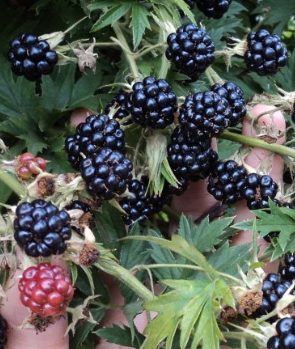Blackberry pests and the fight against them, photo
Content:
Blackberry is one of the most popular shrubs, which spread very quickly in household plots. Depending on which variety these shrubs belong to, they can have both high and low immunity to resist pests. As a rule, blackberry pests and the fight against them are little attacked, photos, those varieties that do not have raspberry genes in the genotype. But on the other hand, raspberry-blackberry hybrids can be susceptible to a variety of viruses, fungi and bacteria, which are mainly characteristic of raspberries.
Blackberry pests: fighting them
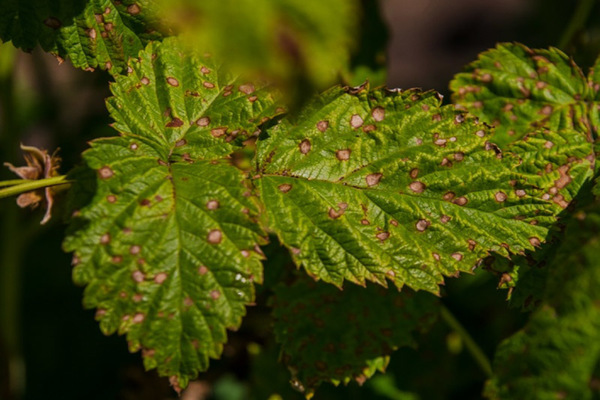
In this article, we will dwell in a little more detail on which parasites and pests of blackberries infect the bush, and how you can win a confident victory in the fight against them. Of course, I would like to start by considering the most general classification of insects that harm these wonderful shrubs.
Among all the variety of insect pests, there are several groups that are especially fond of infecting blackberries, making them weak, vulnerable and, ultimately, completely depriving them of vitality. Of course, this is a fairly relative classification, which was developed based on the observations of gardeners. But we will nevertheless highlight these subtypes and species, because it is very important to know about them in order to protect the plant, provide it with timely assistance and support. The sooner the pest is identified, the more chances are that the plant can be protected:
- blackberry pests, that live in the soil. They are capable of damaging the root system, which just leads to the fact that the blackberry bush begins to fade. If this is not noticed in time, then this can lead to the final death of the plant;
- pests of blackberries, which mainly concentrate their attention on the deciduous part. They can significantly worsen the general condition of the plant, reduce their immunity. Hence the sharp drop in the yield of blackberry bushes, and this, you see, is completely different from what the gardener expects when he starts growing blackberries on his personal plot;
- blackberry pests that can live in blackberry stalks, and among them there are a huge number of tiny bacteria and elements practically invisible to the human eye. But it is precisely because of their active life that the stems of the blackberry begin to wither very quickly, suddenly break off, and this misleads the gardener. As a result, the crop completely or partially perishes, and if the plantation was too heavily infested, then the blackberry bushes will have to be completely exterminated, the soil must be renewed and new plants must be planted to renew the plantation.
It should be noted that there are a huge number of blackberry pests that feed on flowers and berries. They spoil not only the taste of the fruit, but also their presentation (in blackberry - this is a plant that can be stored for a long time, it is very loyal to transportation). These same pests prevent bushes or ovaries from fully developing, and for this reason the gardener has to prune, and sometimes destroy entire bushes.
Blackberry root system pests

Blackberry pests: photos
The soil is home to a huge number of pests and insects, which mainly feed on the roots. The larvae of these blackberry pests move very quickly along the underground passages, they can gnaw all the plants in their path.Of course, young, thinnest and most delicate blackberry roots, as well as shoots, which usually appear in early spring, are of particular value and delicacy for them.
May Khrushch Is the beetle larva. He in itself does not carry any benefit for the blackberry bush, as it feeds on its leaves, ovaries and flowers. But the larvae turn out to be even more dangerous and harmful, because they can get to the most delicate and vulnerable parts - to the roots and young stems. The more there are, the faster the likelihood that the plant will be affected and soon die.
The larva can live for a very long time - about 4 years, if it replenishes its reserves, destroying everything in its path. Then it turns into a pupa, and then adult May beetles are obtained from it. Both adult insects and larvae hibernate in the soil, and fly to the surface around the beginning of May. At the same time, their most active feeding period begins, and at the same time they begin to harm fruit and berry plants and bushes. If we take into account some of the features of the life cycle of the larva, then you can take some measures that will protect the plant from their harmful effects:
- before a new blackberry plantation is planted, it is necessary to process the root system in Aktara's solution. It is an effective insecticide, so the root system will be completely poisonous to the larva for some time (about one month);
- if the gardener has already decided on which plot he will plant blackberries, then a year before that he can plant green manures on this plot - rapeseed or clover, mustard or alfalfa. They secrete substances that scare off grapefruit, so they will be extremely useful;
- adult beetles are collected by hand in the morning, because at this time they are inactive, are in a state of numbness, sleep. Then they must be destroyed in a lime solution;
- if the number of blackberry bushes on the site is small, then in cloudy weather it is best to carefully dig the bushes and shake them over the film. In the same place, you can manually select all the harmful larvae, and then destroy them.
Medvedka Is another large insect that loves to feed on the blackberry root system. It feeds on young shoots and roots, but it can also gnaw through larger roots. Thus, the death of the bush is simply inevitable, and if you do not notice this in time, the bush will wither in about a few days. The larvae laid by the female bear throughout the summer turn into adult insects the very next year. If the gardener noticed that the plant began to wilt, then he should very carefully examine the soil around the plant, and also find holes. They are the entrance to the bear's dwelling. The soil should be loosened, then use some of the methods that we will now indicate to combat the bear:
- a handful of washing powder dissolved in water is poured into the hole of the bear. This can force the bear to get out to the surface, after which it will be quite easy to find it and, accordingly, destroy it. Caught bears can become a treat for poultry - for chickens or ducks;
- when planting a blackberry bush, you can pour a little eggshell into the hole. Dried marigolds and chrysanthemums are also suitable;
- a mixture of sand and kerosene can be scattered around the bushes. The smell will also scare off the bear, although periodically this mixture needs to be updated, since it tends to fizzle out.
There are also a few more remedies. Someone prefers to add a solution of ammonia directly under the root - three tablespoons per bucket of water. You can install a windmill that is held on to a metal wire. With gusts of wind, vibration will be created in the soil, and pests are extremely negative about this.You can make several traps in the form of jars, which will be coated with jam or honey around the edges. In early spring, you can make several baits from bread and poison, as well as from match heads.
If you still use less traditional and more professional means, then a number of chemicals are best suited for this: Medvetox, Medvecid and Boverin. They mix with the soil near the blackberry bushes, and it is through their strong chemical compounds that they affect insects. It is important to adhere to the instructions and safety measures, since these complexes can be toxic to the human or animal body.
Blackberry deciduous system pests and control
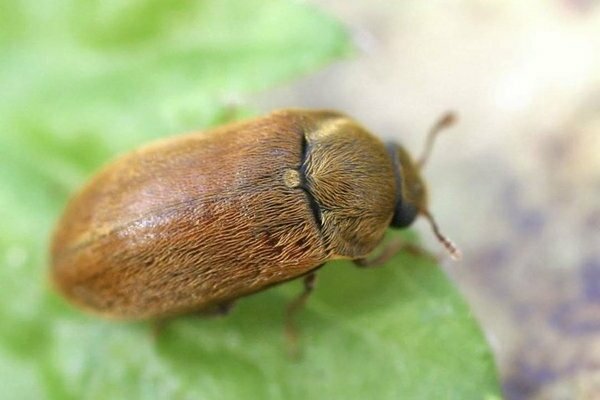
Blackberry pests: photos
Having considered insects that harm the root system of blackberry bushes, it is necessary to refer to the description of pests that can be completely dangerous for the deciduous part of the bush. Blackberry leaves are very attractive to such pests as aphids and ticks, as well as caterpillars and fleas, which are very fond of feeding on juice from greens.
Aphid is one of the most unpleasant pests. She attacks blackberries, which have raspberry genes. These insects are tiny in size, they are very difficult to see, and at the same time they use this to destroy entire blackberry plantations. The aphids that live on blackberries have a characteristic light yellow color. As soon as the aphid begins to infect the leaves, they bend slightly, but the grower cannot see any damage. Nevertheless, such a state of the leaves should already alert him. If the pests are actively multiplying and infecting the leaves, then a massive leaf fall can occur, and in the midst of summer. The harvest of blackberries is noticeably poorer, frost resistance practically disappears, due to which the plant becomes susceptible to various diseases and frosts. Another danger posed by aphids is that they carry viral, almost incurable diseases.
To get rid of aphids, spraying should be done. For example, in early spring, it is necessary to use such harmless biological preparations as Agravertin, Aktofit, Fitoverm. It is necessary to spray 2 times every 7 days, when the drug will be evenly distributed on the leaves, and will effectively destroy aphids. In addition, powerful insecticides are very popular. For example, Confidor or Mospilan. They also need to spray the blackberry, mainly before its flowering.
One of the varieties of the aphid family is the blackberry aphid. It is distinguished by its large size and yellowish-greenish color, characteristic of this pest, with a dark ornament on the back. In general, the lifestyle of the blackberry aphid is no different from the typical raspberry leaf aphid, which we wrote about in the previous part of the article. Therefore, the gardener needs to keep in mind that the methods of combating this pests of blackberries and the fight against them are identical in the photo.
Mites Are pests that belong to small spiders. Unfortunately, it is impossible to see them with the naked eye, but you can perfectly see the consequences of the vital activity of these pests. The leaves are covered with spots of a whitish or speckled appearance. As a rule, mites cause very huge damage to young seedlings, their leaves turn yellow very rapidly, dry up, fall off, which indicates that the plant clearly needs help and treatment with drugs. Adult bushes suffer from ticks a little less often. It is worth focusing on the fact that ticks reproduce most actively in hot conditions, therefore, it is most often found on blackberry bushes grown in greenhouses or in hot, southern regions.In order to prevent this, it is recommended to treat the seedlings with drugs such as Fitoverm or Akarin, which are quite effective among all other drugs for fighting deciduous pests, in particular ticks.
Raspberry mite Is a microscopic arachnid that has a subtle red tint. In the spring, he comes out from under the cups, where he spends the whole winter, and strives to get more nutrients, mainly from the lower part of the leaves. As a result of their activity, the appearance of the leaves is noticeably deformed, they become as if crimped, moreover, they lose all their aroma. This becomes a sure sign that the plant is affected. In addition, spots appear that resemble an unhealthy mosaic, which is also a signal to start fighting the pest.
Also among the pests of blackberries, it is necessary to highlight such as:
- raspberry hairy mite;
- raspberry leaf sawfly;
- cruciferous flea;
- various caterpillars, which also love to feast on the leafy part.
All these pests are quite different in their type and generic affiliation, but they can equally harm the plant, bring it to its very death. To prevent this, you should know several methods to combat them. In the next part of this article, we will just list the most basic, available and, most importantly, inexpensive methods.
Other pests of blackberries: control methods
Basically, blackberry pests like to localize on young shoots or roots, that is, on young blackberry seedlings. In order to avoid the spread of blackberry pests and the fight against them, photo, at the very first signs, it is necessary to spray the stems with drugs such as Fitoverm or Aktofit. If the shoots and branches are completely affected, then it is best to carry out sanitary pruning according to all the rules, and treat the remaining shoots with substances anyway.
Some blackberry pests can be dealt with by cutting out and then burning all the shoots with growths. Basically, it is recommended to do this either in the fall or early spring, before the blackberries enter the flowering phase. Among the control measures are loosening the soil between the bushes, mulching the soil (usually this should be done in the spring) in order to prevent the emergence of already adult insects on the site. If the plant is too badly affected, then in early spring it is possible to carry out treatment with substances such as Aktara and Confidor. The method of use and dosage are indicated directly on the package, so before use, you should study the instructions in detail.
To cope with such blackberry pests as weevils, you can spray blackberry bushes with mustard powder infusion. The smell of it scares away insects, and those that have already settled on the bush begin to slowly die, since they can no longer feed on the part of the plant treated with mustard. Of course, in order for each of these tools to be effective, it is extremely important to constantly repeat the procedures, adhere to the schedule and consistency. In this case, the chances that the pest will be exterminated will constantly increase, which will play an important role for the gardener himself. Of course, it is necessary to remember about safety precautions, as well as the fact that an overabundance of components or agents can itself lead to the fact that the plant will give a completely opposite reaction.
Therefore, in pursuit of ideal bushes and the absence of blackberry pests, it is necessary to remember about the health of the bush itself, that blackberries are quite susceptible to drugs. Fortunately, today drugs contain compounds that are completely safe for human health and life. They do not accumulate in the fruits themselves, so you can safely eat them, treat your loved ones, even the smallest family members.
Do not forget about safety during processing: using chemicals and drugs, it is necessary to process with special gloves, glasses and a mask so that the components do not get on the mucous membrane and are not absorbed into it. Do not consume food or drinks while handling blackberry pests.


